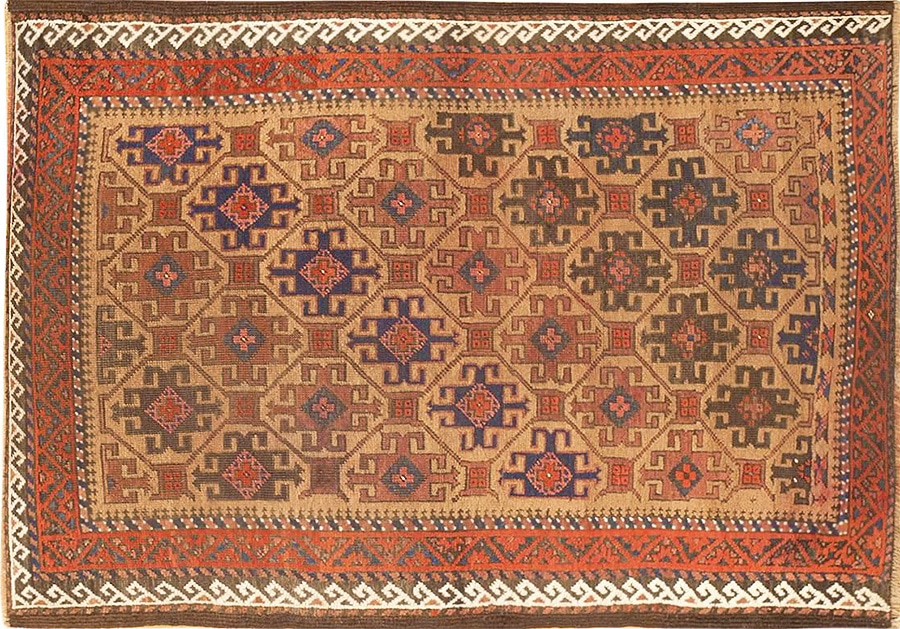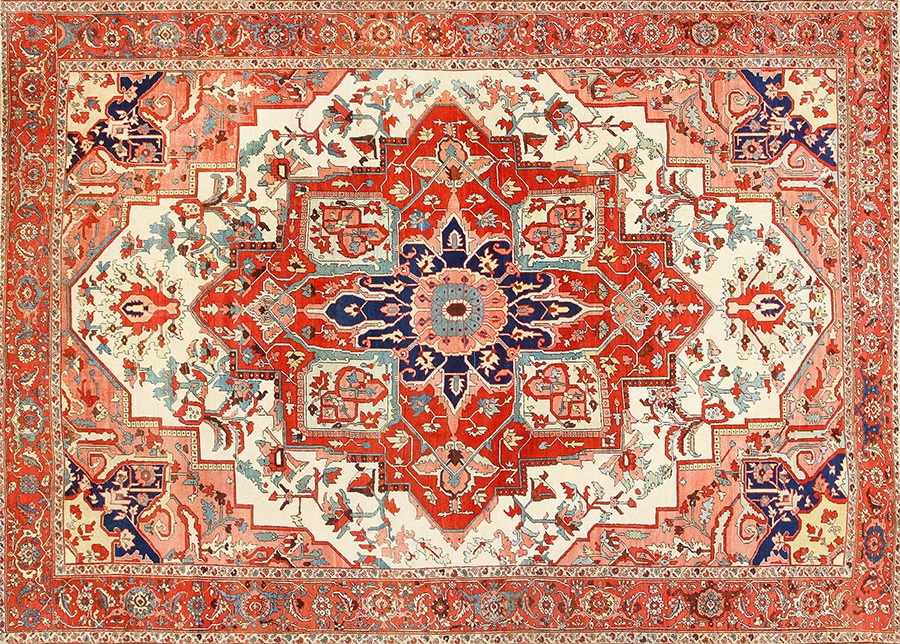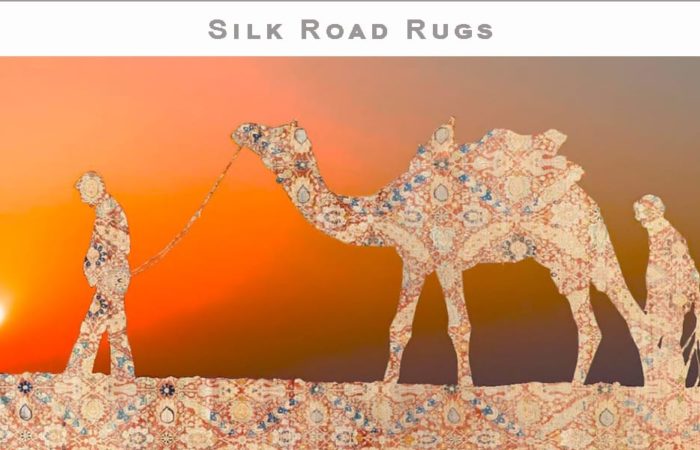History Of The Antique Nomad Carpet From Persia
Shop All Persian Rugs | Shop All Antique Rugs | Shop All Tribal Rugs
Learn more about the antique nomadic rugs
What Are Antique Persian Nomadic Area Rugs?
Antique Persian nomadic area rugs, also known as nomadic or tribal rugs, are handmade rugs that have been crafted by various nomadic or semi-nomadic tribes and communities in the region of Persia, which is now modern-day Iran. These Oriental area rugs have a rich history and are highly sought after for their unique beauty, craftsmanship, and cultural significance.
Here are some key characteristics and features of antique Persian nomadic area rugs:
- Traditional Craftsmanship: These types of area rugs are meticulously handwoven by skilled artisans, often using traditional weaving techniques that have been passed down through generations. The process can be time-consuming and labor-intensive.
- Diverse Designs: Persian nomadic rugs come in a wide range of designs, patterns and magnificent Persian rug colors. Each tribe or community has its own distinct rug design elements and area rug patterns and motifs that reflect their cultural heritage and way of life. Common design elements include geometric shapes, floral patterns, and intricate borders.
- Natural Materials: Traditional Persian nomadic rugs are typically made from natural and some of the best rug making materials such as wool, cotton and sometimes, very rarely – silk. The use of natural vegetable rug dyes for coloring is also common, giving the beautiful rugs their rich and vibrant hues.
- Variations in Size: These area rugs vary in size but are often smaller in dimensions, making these area rug styles suitable for use as floor coverings, tapestry like wall hangings, or decorative pieces. Large size area rugs are less common among nomadic weavers.
- Durability: Persian nomadic rugs are known for their durability and can last for generations when properly cared for. The quality of the rug’s materials and construction contributes to its longevity.
- Nomadic Influence: The designs and motifs found on these rugs and carpets often reflect the nomadic lifestyle and environment of the weavers. They may incorporate elements such as animals, plants, and symbols that hold cultural significance.
- Collector’s Items: Antique Persian nomadic rugs are highly prized by collectors and enthusiasts of Oriental rugs. Their age, rarity, and craftsmanship can greatly impact their value in the antique market.
- Regional Variations: Persian nomadic area rugs can vary significantly in style and design depending on the region and tribe that produces them. Some well-known nomadic rug-producing regions in Iran include Kurdistan, Baluchistan, and Fars.
- Knotting Techniques: The rugs are typically woven using either the symmetrical (Persian Senneh) knot or the asymmetrical (Ghiordes) knot, depending on the region and tradition of the weavers. These area rug knots affect the texture and appearance of the rug.
- Cultural Significance: These mostly geometric design area rugs are not only functional but also hold cultural significance. They often serve as expressions of a tribe’s identity, history, and artistic creativity.
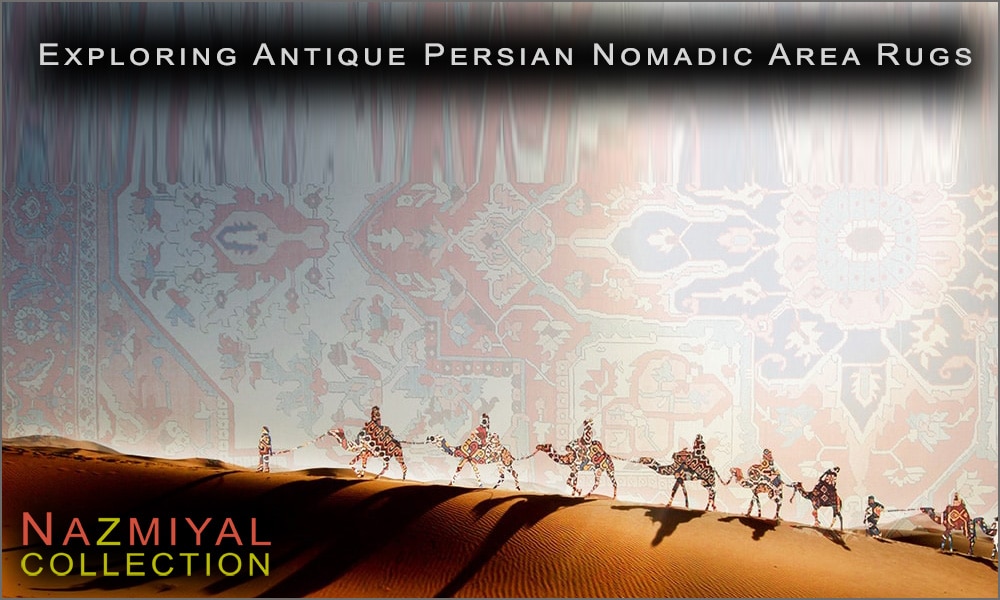
The Antique Persian Nomadic Area Rugs
In summary, antique Persian nomadic area rugs are exquisite handwoven antique textiles that bear the unique cultural and artistic heritage of the nomadic tribes in the Persian region. They are valued for their beauty, craftsmanship, and historical significance, making them treasured pieces for collectors and those who appreciate fine textiles.
Learn more: Home Decorating With Geometric Area Rugs | The Handcrafted Persian Area Rug | What are the most popular Persian rugs?
What are the more popular types of Persian tribal and nomadic rugs?
Persian tribal and nomadic rugs encompass a wide range of styles and designs, each associated with specific tribes or regions.
Some of the more popular types of Persian tribal and nomadic rugs include:
- Heriz Rugs: While not strictly nomadic, Persian Heriz rugs are woven in the Heriz region by settled communities but share some design elements with tribal rugs. They are characterized by large, bold geometric patterns and are highly durable.
- Serapi Rugs: Persian Serapi rugs, sometimes referred to as Heriz Serapi or Serapi Heriz, are known for their durability and bold, geometric designs. They are woven in the Heriz region, which is located in Northwestern Persia / Iran. Persian Serapi rugs typically feature large central medallions surrounded by intricate geometric patterns and vibrant colors. These rugs have a more formal appearance compared to some tribal rugs.
- Bakshaish Rugs: Bakshaish rugs are also woven in Northwestern Iran, particularly in the village of Bakshaish. These rugs are celebrated for their artistic creativity and unique designs. They often feature spacious, open fields with large, stylized motifs, including oversized palmettes, animals, and geometric elements. Bakshaish rugs are highly sought after by collectors due to their exceptional craftsmanship and distinctive aesthetics.
- Kurdish Rugs: Kurdish weavers produce a variety of rug styles with different designs and color palettes, often showcasing their artistic creativity. These Persian Kurdish rugs are woven by Kurdish communities in various regions.
- Qashqai Rugs: The Qashqai tribe produces some of the most well-known tribal rugs in Iran. These Persian Qashqai rugs often feature bold geometric patterns, stylized animal design motifs, and bolder richer colors.
- Bakhtiari Rugs: Persian Bakhtiari rugs are known for their large medallion designs and floral motifs. They are produced by the Bakhtiari tribe in the Zagros Mountains region.
- Kilims (Kelim or Gelim): Kilim rugs are flat-woven area rugs without a pile. They are known for their intricate geometric patterns and vibrant colors. Various tribes, such as the Qashqai and Bakhtiari, produce kilims in Iran.
- Gabbeh Rugs: Persian Gabbeh rugs are characterized by their simplicity and bold, abstract designs. They often feature depictions of animals, trees, and human figures. They are woven by the Qashqai and Luri tribes.
These are just a few examples, and there are many more types of Persian tribal and nomadic rugs, each with its unique characteristics and cultural significance. Collectors and enthusiasts often value these rugs for their distinct designs, quality craftsmanship, and the stories they tell about the communities that create them.
Shop All Persian Heriz Serapi And Bakshaish Rugs
More about the Persian nomadic rug
A certain mystery and romance attaches to the concept of Oriental rugs, but perhaps the most romanticized objects of this kind are the so-called antique nomad carpet from Persia. What distinguishes antique nomadic carpets of this type is, first of all, the social and economic basis behind them.
The nomadic rugs were produced by Persian people whose identity was organized around various tribes and clans. Their economy was depended on domesticated livestock, especially sheep and goats. Their style of life was that of a nomadic, tent-dwelling population that periodically had to move in search of grazing for its flocks, as opposed to a sedentary population based on agriculture.
In Persia, the most well-known nomadic weavers are above all the Turkmen and Baluch tribes of the Northeast, the Khamseh, Afshar, and Bakhtiari, of the Southwest, and the Shahsavan of the Northwest Persia.
In terms of Persian rug design, however, there is no single, unifying feature that one may define as nomadic. This does not include, of course, a taste for abstract geometric forms or highly geometric animal and floral rug motifs, a taste that is also typical of village weaving.
The tribal nomadic Persian rug design repertory has often been claimed to be incredibly ancient, involving motifs that stem from the timeless tribal culture of its weavers. But like those of village weaving, the designs of nomadic rugs originated as highly abstracted versions of city rug designs of floral, animal, or geometric medallion type. They represent the creative artistic side of the normal economic relations existing between nomadic peoples and their sedentary village and urban neighbors. At times nomadic rugs, especially those of Turkmen, also adapted the much finer technique of urban Persian weaving, in contrast to the coarser weave found in most nomadic work.
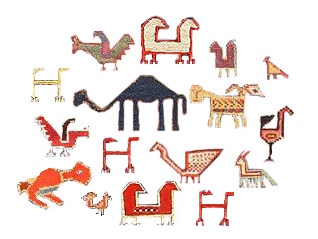
Tribal Geometric Animal Rug Designs
The truly distinctive aspects of nomadic weaving are primarily technical. As the products of tent-dwelling peoples they tend to be woven on horizontal rug looms set up on the ground rather than on vertical looms set up in houses. And as the products of nomadic sheep-herding peoples, they also tend to be made entirely of wool, including the foundation of the rug.
This contrasts notably with city vs. village rug production, which utilizes spun cotton, a sedentary agricultural product, for the rug foundation since cotton enables a more consistent tension allowing for straighter, more perfectly rectangular weaving. The format of antique nomadic rugs is also distinctive. They are not simply floor coverings, or at time cushions, of variable size like urban and village rugs. Instead they are also woven as storage bags, both large and small, hung on the tent walls or used on pack animals, effectively serving as nomadic equivalents of closets, cupboards, and chests or boxes.
This rug blog post that talks about the antique Persian nomadic area rugs was published by Nazmiyal Rugs


